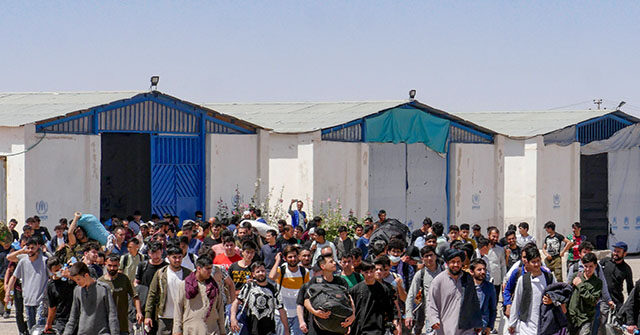On Thursday, Taliban leaders announced an investigation into reports concerning Iranian border guards reportedly opening fire on a multitude of Afghans attempting to cross into Iran illegally. This alarming situation arose amidst a significant influx of Afghan migrants into Iran, which is linked to the Taliban’s ascent to power following the downfall of the U.S.-backed government in 2021. The Iranian government refuted claims of a massacre but affirmed its commitment to manage the growing presence of Afghan migrants at the border, a direct consequence of the Taliban’s imposition of stringent, fundamentalist laws that have forced many to flee their homeland. As the world watches, the complex dynamics between Iran and the Taliban, which share formal diplomatic ties despite underlying tensions, are highlighted by this tragic incident.
The recent influx of Afghan refugees crossing into Iran has become a significant contentious point after the Taliban’s return to power in 2021. The movement of individuals seeking a way out of the oppressive regime has vastly increased, especially given the Taliban’s harsh policies against women and dissenters. Following reports from Afghan media and human rights organizations detailing an incident in which Iranian border patrol reportedly shot at a group of Afghan migrants attempting to escape, graphic videos have surfaced on social media, intensifying public outrage. Reports indicated that between 200 and 300 Afghans were involved, and some outlets estimated the casualty count to be as high as 200, igniting calls for international scrutiny and action.
Several international organizations, including the United Nations Assistance Mission in Afghanistan (UNAMA) and Amnesty International, responded to these reports, expressing deep concern over potential human rights violations. The UN urged the Iranian government to clarify the situation, while Amnesty cited a pattern of abuse against Afghan migrants by Iranian authorities over the past two years. Iranian Ambassador to Kabul Hassan Kazemi Qomi dismissed the reports of a massacre as false, asserting Iran’s right to control illegal immigration. Despite denying allegations, he emphasized the necessity of addressing the ongoing influx of Afghan migrants, a topic straining relations between Iran and the Taliban.
While the Taliban has not overtly condemned Iran’s actions, they have initiated an internal investigation into the shooting incident, as announced by their spokesperson. The group’s media outlet, Bakhtar, confirmed that investigations were underway and involved multiple Taliban leaders. Details surrounding the incident remain murky due to its occurrence beyond Afghanistan’s borders, complicating efforts to obtain comprehensive information. However, deputy spokesman Hamdullah Fitrat indicated that intelligence gathering is essential for addressing this issue and will be reported back to the “Prime Minister’s Office” for further directives.
Moreover, recent discussions between Taliban and Iranian officials highlighted attempts to reach a mutual understanding regarding the illegal immigration situation. The Taliban’s Refugees and Repatriation Minister, Khalil Rahman Haqqani, noted their intention to facilitate the return of Afghan migrants from Iran and acknowledged Iran’s long-standing role in hosting Afghans. Yet, Iran remains hesitant to welcome foreign nationals amid rising domestic concerns. This expectation of coordination and a joint plan serves to underscore the delicate balance the Taliban seeks to maintain with Iran while managing the ongoing refugee crisis resulting from their governance.
Despite the Taliban’s claims of fostering positive diplomatic ties with Iran and their efforts to address the crisis, multiple reports of human rights abuses against Afghan migrants, including shootings and violent repatriations, continue to emerge. Thorough documentation of these abuses by organizations like Amnesty International emphasizes the harsh realities faced by those seeking refuge in Iran. Personal accounts have emerged of migrants experiencing brutality at the hands of Iranian authorities, illustrating the grave danger that Afghan refugees encounter during their attempts to escape the repressive regime. As this heartbreaking narrative unfolds, the international community’s response to both the Taliban’s governance and Iran’s treatment of Afghan migrants remains critically essential.

